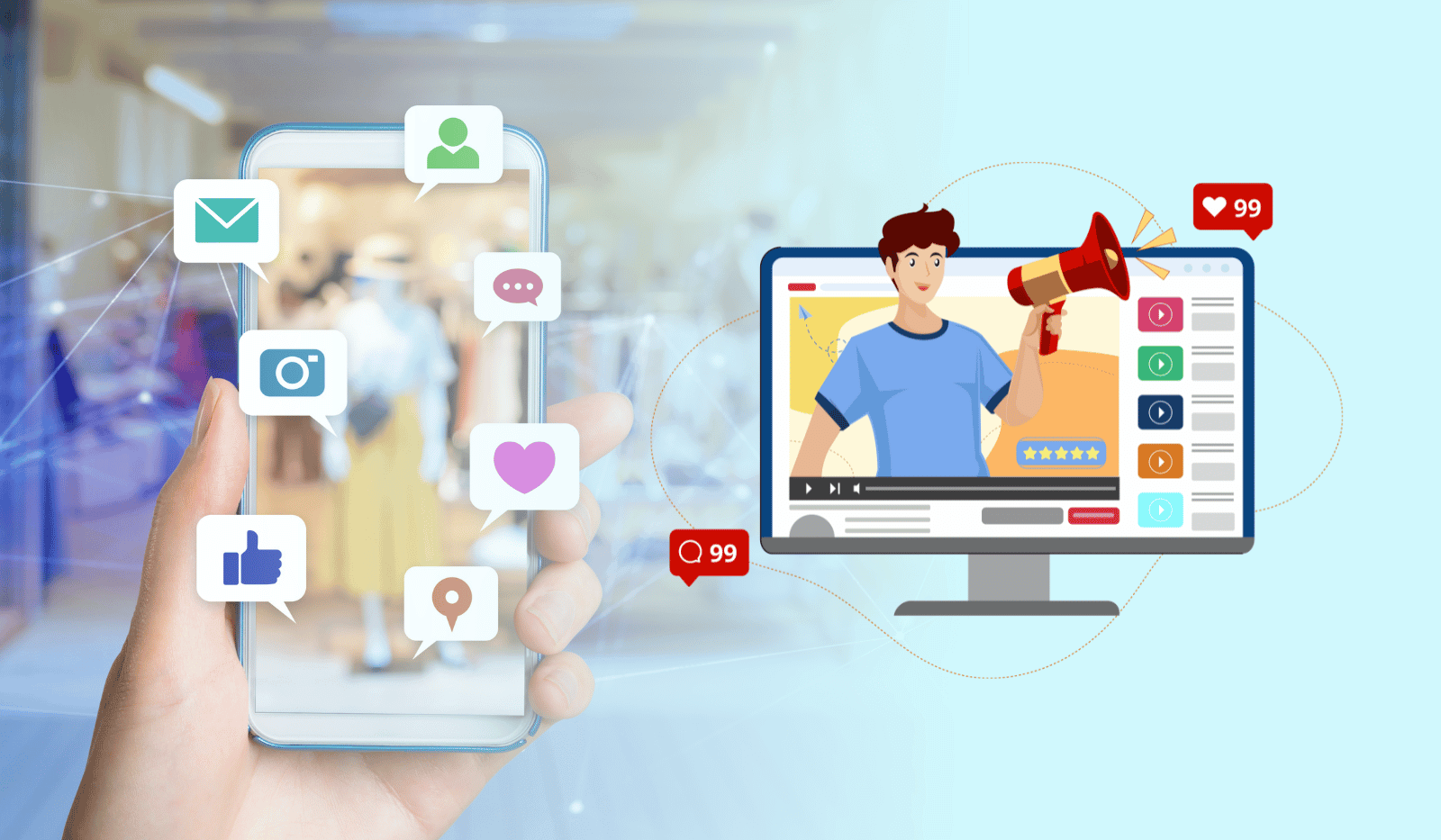There’s always something new in the world of B2B marketing, and this 2023, social selling will become a critical component for businesses that want to gain a competitive edge.
With the rise of social media platforms and the shift in customer preferences, solely sticking to traditional selling methods just won’t cut it.
So, how can your business create a winning social selling strategy? Let’s explore the steps and strategies that will help you harness the power of B2B social media marketing.
What is social selling and what is its importance in B2B?

Social selling is a sales technique that uses social media to look for prospects, establish connections, and build relationships with potential customers.
When you log in to LinkedIn, Twitter, Facebook, Instagram, and other platforms, connect with a potential client, and then proceed to engage with them—that’s social selling already! In the B2B sphere, social selling has now become an essential component of a successful digital marketing strategy.
Check these out:
- 89% of B2B marketers have already started using LinkedIn for lead generation. (LinkedIn)
- 31% of B2B professionals shared that social selling has helped them build deeper client relationships. (OptinMonster)
- One in three B2B salespeople reported that social selling increased the number of leads they have worked with. (Insider Intelligence)
The shift from traditional to social selling
Survey results from InsideView showed that more than 90% of decision-makers admitted they “never” respond to cold calls. Additionally, as TaskDrive CEO Tim Cakir mentioned in a recent webinar, the outbound game has become a game of quantity and not quality. With so much competition out there, the transition from traditional to social selling only highlights the importance of adapting to new technologies and customer preferences.
After all, if your prospects cannot be reached via cold email or cold call, then it’s time to try something different. Traditional sales techniques focus on getting quick results, social selling is more about building long-lasting relationships.
While social media has worked its way to be a part of people’s everyday lives, it has also become an essential tool for B2B businesses to connect with their target audience.
Unlike traditional selling methods that focus on cold calling or direct outreach, social selling takes a more personalized and relationship-oriented approach. It revolves around understanding and connecting with the needs and interests of potential buyers, rather than pushing products or services directly.
Thanks to social media, B2B customers now have access to a wealth of information at their fingertips. This has led to a shift in how they make their purchase decisions. Buyers now place a greater emphasis on trust, credibility, and thought leadership.
What does this mean for B2B companies? Simple: It’s more important than ever to establish an engaging presence on social channels and provide valuable, educational content to target audiences.
3 key benefits of social selling for B2B businesses
Social selling offers numerous benefits for B2B businesses. By establishing a strong presence on the appropriate social media channels, you can increase brand visibility, improve customer relationships, and achieve higher lead conversion rates.
Increased brand visibility across various channels
Did you know that almost 50% of social traffic to B2B websites actually comes from LinkedIn? This means that your potential customers are on social media. The prospects you are targeting most likely have social media accounts, and that means they spend time on that platform. As long as there is any valuable content from your company up on social media, your prospective customers can run into your brand.
Interestingly, content posted by employees on their personal social accounts actually gets 8x more engagement than official content from brand accounts. This further emphasizes how content from real people attracts audiences more than branded content.
Improved customer relationships
Engaging on social media is just more personal and organic and this enables B2B companies to establish rapport with potential customers. By engaging with prospects on social media, sharing valuable content, and actively listening to their needs, salespeople can establish trust and credibility—leading to stronger relationships and increased opportunities for sales. In fact, 31% of B2B professionals shared that social selling has allowed them to build deeper relationships.
Higher lead conversion rates
It has been reported that social selling professionals have closed 40-50% more new clients. After all, the personalized and relationship-focused approach allows for more targeted and relevant conversations, which increases the likelihood of converting leads into customers. Plus, 78% of businesses that have social selling strategies in place outperform those that don’t. These numbers further emphasize that social media holds the power to grow in today’s competitive landscape.
How to develop your B2B social selling strategy in 3 steps

Developing a B2B social selling strategy involves three key steps. By following these steps, your business can ensure that its efforts are tailored to the specific needs and preferences of potential customers—hence, maximizing the chances of success.
Step 1: Identify your target audience
The first step in developing a B2B social media marketing strategy is to clearly define your target audience. A well-defined target audience allows you to zero in on the most relevant channels, ensuring that your message reaches the right people at the right time.
Here are some tips for identifying your target audience:
- Identify the industries, job roles, and company sizes that align with your product or service.
- Determine the key decision-makers and influencers within those organizations who are most likely to benefit from what you offer.
- Establish your objectives, such as increasing lead generation, improving brand awareness, or driving conversions.
- Create your Ideal Customer Profile (ICP) which is a subset of customers that your business can serve most effectively.
Step 2: Choose the right social media platforms

Different social platforms cater to different audiences and offer unique opportunities for engagement. To maximize your social selling efforts, choose platforms that are popular with your target audience.
Here are some tips for selecting your social media channels:
- Consider factors such as the demographics of your target audience and their preferences.
- Think about the type of content you plan to share and align them with the overall goals of your social media marketing strategy.
- You don’t need to create an account in every channel—just in the ones that matter. For example, in 2021, LinkedIn was the top-performing social media network for B2B marketing.
- The channels that work for other businesses won’t necessarily work the same for you—and vice versa.
Step 3: Create valuable and engaging content
Create and curate content that addresses the pain points and interests of your target audience. This includes new and existing customers. Focus on providing value rather than directly promoting your products or services.
Here are some tips for creating valuable content:
- Stay up-to-date with industry news and trends.
- Monitor relevant hashtags, join industry-specific groups, and follow key influencers to gain insights and participate in conversations.
- Share thought leadership articles, case studies, and other relevant resources.
- Leverage AI tools like ChatGPT to help you come up with comments and posts. We recently shared a few tips and prompts specifically for LinkedIn.
The importance of leveraging social listening and analytics tools

These tools allow you to monitor competitors, industry trends, and customer feedback, providing valuable insights that can help you refine your social selling efforts and stay ahead of the competition.
By using social listening tools, you can measure the success of your efforts and adjust your strategy based on data-driven insights. This ensures continuous improvement and growth in your social selling efforts.
There are two major reasons why you should maximize these tools:
- To keep an eye on competitors and industry trends. By monitoring the strategies and tactics employed by your competitors, you can see what’s working for them and what’s not—ultimately helping you to refine your own efforts.
- To measure success and adjust your strategy. If you don’t measure your social media analytics, you won’t know if your efforts are working or not. Measuring the success of your social selling efforts is essential for determining which strategies are producing the desired results and which ones need to be tweaked.
What are the metrics you should keep an eye on?
- Sales pipeline – How was social media contributed to the growth of your sales pipeline? Do you have a significant number of new leads in the pipeline and are they moving along faster or slower than usual?
- Closed sales and lost deals – In the event that you find yourself with a healthy pipeline thanks to your B2B social media efforts, you must now check how many of your leads became actual sales and how many became lost deals. Identify where they tend to drop off and take note of their objections and questions. That way, you can refine your approach.
- Conversion rate – As with any sales strategy, it’s important to know if social media is reaping results. Regularly review your conversion rate (overall and specific to social media) to determine if you should invest more time and resources in social media marketing efforts. By tracking conversion rates, you can identify areas for optimization and improve your overall conversion funnel.
Based on these data-driven insights, you can adjust your social media strategy to better meet the needs and preferences of your prospects. This could involve altering the content posted, trying out a new platform, or switching up the manner in which customers are engaged. On the other hand, your SDRs keep track of a different set of metrics. Your social strategy will also impact these metrics so it’s important to continue tracking these and observing patterns that may arise. For example:
- SDRs track the Win Rate (the successful deals in comparison to the total deals in the sales pipeline). If you notice that the Win Rate continues to increase as you increase your social media efforts, this is a sign to check if any leads from social media actually contributed to this. That way you can verify if the Win Rate did increase due to social media particularly.
- SDRs also track the average length of their sales cycle. It would be interesting to track the average cycle per channel so you can see if prospects convert faster via emails, or phone calls, or social channels.
Some tools you can explore:
- Hootsuite Insights: Measure social media engagement, monitor conversations, track mentions, and oversee trends across different social media platforms. It provides real-time monitoring, sentiment analysis, and customizable reports, making it useful for tracking competitors and staying informed about industry trends.
- Talkwalker: Talkwalker is a social listening and analytics platform that enables you to monitor conversations, track trends, and analyze sentiment across social media channels, news sites, blogs, and forums. It has features like competitor benchmarking, influencer identification, and image recognition, helping you gain a comprehensive understanding of your industry landscape.
- Sprout Social: Sprout Social is a social media management and listening tool that allows you to track hashtags and analyze competitor performance. Access timely insights so you can refine your strategies right away.
4 tips for building and nurturing relationships through social selling

Relationship building is a key component of a successful B2B social media strategy. The secret here is to engage your potential clients in a meaningful and non-generic way.
This involves creating valuable and engaging content, participating in relevant conversations on social media channels, and leveraging the power of personal relationships to foster trust and loyalty.
1. Establish thought leadership
By positioning your brand and even yourself as an industry expert, you can create brand awareness and attract leads at the same time.
To establish thought leadership, it’s important to create content that demonstrates your expertise and addresses the needs and interests of your prospects. Think of it this way—if you use social media to reach out to a prospect, chances are they will check out your personal profile and your company’s page.
If your profile and page have quality content, social proof, and even customer stories, prospects might see you as a credible resource in the industry.
Quick note: you don’t have to confine yourself to writing long-form content. You can also maximize engagement by commenting on your prospects’ posts, sharing relevant content from external sources, and repurposing your existing content.
2. Collaborate with industry influencers
This can amplify your brand voice and help you reach a wider audience. By partnering with business professionals who have a strong presence in your industry, you can tap into their established audience and credibility to promote your brand and products.
For B2B social media, here are some ways to maximize partnerships and collaborations:
- Identify potential partners who share your brand’s values and have a strong connection with your target audiences.
- Proposing co-marketing activities like guest posts, interviews, or webinars that help both parties grow and achieve their goals.
- Engage regularly on their content with meaningful comments and not generic ones.
3. Take the time to get to know the prospect
The days of so-called personalized cold emails with first names and company name placeholders are over. With the number of emails people receive in a day, your cold email should have a stand-out subject line to get noticed. Otherwise, most people just delete emails if they don’t know the sender personally.
With social media, you gain access to your prospects’ recent activities, hobbies, and interests which you can use to tailor your approach. By demonstrating a genuine interest in what they do, you can establish a stronger connection and build trust. Tim Cakir discussed the 5-5-5 Method which you can read more about here. Essentially, it entails using specific information about the prospect when reaching out to them—instead of just editing a generic email and sprinkling their company name every few sentences.
4. Engage, engage, engage
Social media engagement should be continuous and regular. After your initial interactions, you can keep the conversation going to truly nurture the relationship.
Even while there’s an ongoing negotiation or you’re waiting for a response, you can still engage with your prospects on their social media content. By staying connected, you remain top-of-mind.
How to train your sales team for social selling success

A well-trained sales team is crucial for maximizing your company’s social media presence, as they are the ones who will be interacting directly with your target clients on social media channels.
By providing them with the tools and resources they need to succeed, you can ensure that your sales team can effectively build and nurture relationships with potential clients, ultimately driving sales and achieving your goals.
Align on your ICP
Help your sales team understand the importance of identifying and understanding your ICP and buyer personas.
Work together to define the characteristics, pain points, and motivations of your ideal customers. By aligning their social selling efforts with the specific needs and preferences of your target audience, your team can deliver more relevant and personalized interactions.
Conduct skills-specific training
Equip your sales team with the skills and knowledge they need to succeed. Remember, if they succeed, then your business succeeds.
Here are some of the things you can include in their training program:
- Comprehensive training on social media platforms, best practices, and etiquette. Cover the basics of each platform that they will be using.
- Introduce social listening tools, CRM, and other tech stack that can help them be more efficient and effective.
- How to develop a content strategy and implement it with and without the help of AI tools.
- How to monitor and evaluate the progress and results of your social media strategy
Develop a social selling playbook
A comprehensive playbook provides your sales team with a clear framework and guidelines for implementing your B2B social media strategy effectively.
A good playbook should include:
- an overview and step-by-step process of the social selling process
- guidelines and best practices on social media
- tips for engaging with prospects
By providing your sales team with a playbook that is tailored to your business and industry, you can ensure that they have a streamlined process to follow.
You can check these examples of playbooks for reference
Provide ongoing training and support
When you are able to provide continuous training and resources, your sales team stays up-to-date on new developments, trends, strategies, and tools.
Establish a culture of ongoing coaching and feedback to continuously improve your sales team’s skills. Conduct regular training sessions, workshops, or webinars to address emerging trends, new techniques, and platform updates.
You can also provide individual coaching sessions to help team members refine their strategies and overcome any challenges they may face. Encourage open communication and create a feedback loop to ensure continuous learning and improvement.
By investing in the ongoing development of your sales team, you can ensure that they are well equipped to successfully navigate the ever-evolving world of B2B social media.
Take your growth to the next level by adding social selling to your strategy
Social media has become an essential platform for B2B companies. By investing in your social media strategies, your business can effectively harness its power to drive growth.Are you ready to rise to the challenge and seize the opportunities that social media presents? Schedule a free consultation with the TaskDrive team to discover how you a tailored and personalized social selling approach can transform your business.



